Fuzzy Drums, Hairy Horns and Silky Keys | Book Feature Preview
Effects pedals are not just for guitar gods. In the Stompbox feature Fuzzy Drums, Hairy Horns and Silky Keys, writer and guitarist James Rotondi pulls readers away from the six string and into a vibrant new musical lane. “String and horn players, synthesizer and keyboard mavens, and even vocalists, drummers, and turntablists have been exploiting the virtues of distortion, reverb, delay, wah-wah, and more for decades,” James writes, name-checking Miles Davis, Stevie Wonder, Trent Reznor and Mix Master Mike among the heroes stomping their way to sonic legend. But the use of pedals as a “secret weapon” for non-stringed instrument players is alive and kicked on. Roto and photographer Eilon Paz traveled the country to speak with musicians who use effects pedals to create unique sounds across genres and with a variety of instruments.
Drummer Matt Chamberlain – whose bonafides include work with David Bowie, Bob Dylan, Paul McCartney, and others – thought about how “guitar players get to process their live sound while they’re playing, so why can’t drummers?” Inspired by David Torn (a prolific musician, pedal collector, tinkerer and fellow Stompbox feature) and UK prog-rock drummer Chris Cutler, Matt was determined to distort his acoustic kit without suffering feedback. He was successful by combining a mono room microphone to capture the sound of his drumming live, a Roland SPD-SX drum pad to trigger a looping device, which is sent through a mixer and its sound assigned to four effects pedals. Matt says he likes to “go off” in studio, creating effects while tape is running – a process Eilon captures in almost claustrophobic detail in Fuzzy Drums.
“I was able to get the same catharsis out of playing my viola that I used to get out of listening to hardcore, and it allowed me to play much more freely, even recklessly, than I had ever allowed myself to do before.” —Lisa Molinaro
Meanwhile in Portland, Oregon, violinist Lisa Molinaro found her musical lane by switching on an effects pedal. “I was able to get the same catharsis out of playing my viola that I used to get out of listening to hardcore, and it allowed me to play much more freely, even recklessly, than I had ever allowed myself to do before,” she says in the Stompbox feature. Lisa is a member of Modest Mouse and has played with The National and The Decembrists, but is most inspired by Warren Ellis and Nick Cave. To get her viola to sound as heavy as the drums, Lisa amplified her instrument with a lightweight pickup and began experimenting with reverb, delays and a Voodoo Labs Proctavia Octave Fuzz. While Lisa certainly isn’t the first string player to add electronics to her sound, her passion for the unique way a viola can interpret effects pedals has been well launched into the realm of popular culture.
“There are so many types of attack with a viola and a bow, so that changes how you’ll use effects with it, too,” Lisa says in Fuzzy Drums. “A very gradual bow stroke will work great for longer reverbs and ambiences.” Her Pedaltrain PT-2 pedal board, shot for Stompbox, shows a similar attention to detail and nuance. “I actually find that fuzz pedals work a lot better on strings than, say, overdrives and other overdrives and other more tube-like distortions. That’s what I want anyway; a more screechy, metallic sort of sound.” While the musician can effect her own pitch modulation, Lisa’s broad lineup of neat and colorful stompboxes showcases how pedals can create the sound of an orchestra.
“The idea that guitar pedals are only for using on guitar is like the hangover that won’t go away.”—Justin Meldal-Johnsen
Rounding out this Stompbox feature is an inside look on how French keyboard legend Jean-Michel Jarre achieved his signature sultry synthesizer sound. For his breakthrough 1976 album, Oxygène¸Jean-Michel used the strings ensemble section of the Eminent 310 and watered down the voltage on a Small Stone phaser. Jean-Michel and Beastie Boys keyboardist Money Mark discuss the advantages of the storied synthesized string machines, as well as “certain other keyboard-with-pedal sounds that have become sort of staples in popular music,” Mark notes. As the two deep-dive into the early days of effects-aided keyboards – from the classic Mu-Tron Bi-Phase and distortion pedals like that DNA Analogic Bass Dragger – Eilon is along for this ride. His photos are fairly sparse in comparison to the rest of the feature, where pedals threaten to overwhelm the frame. In the Silky Keys section on this feature, the keys do the talking.
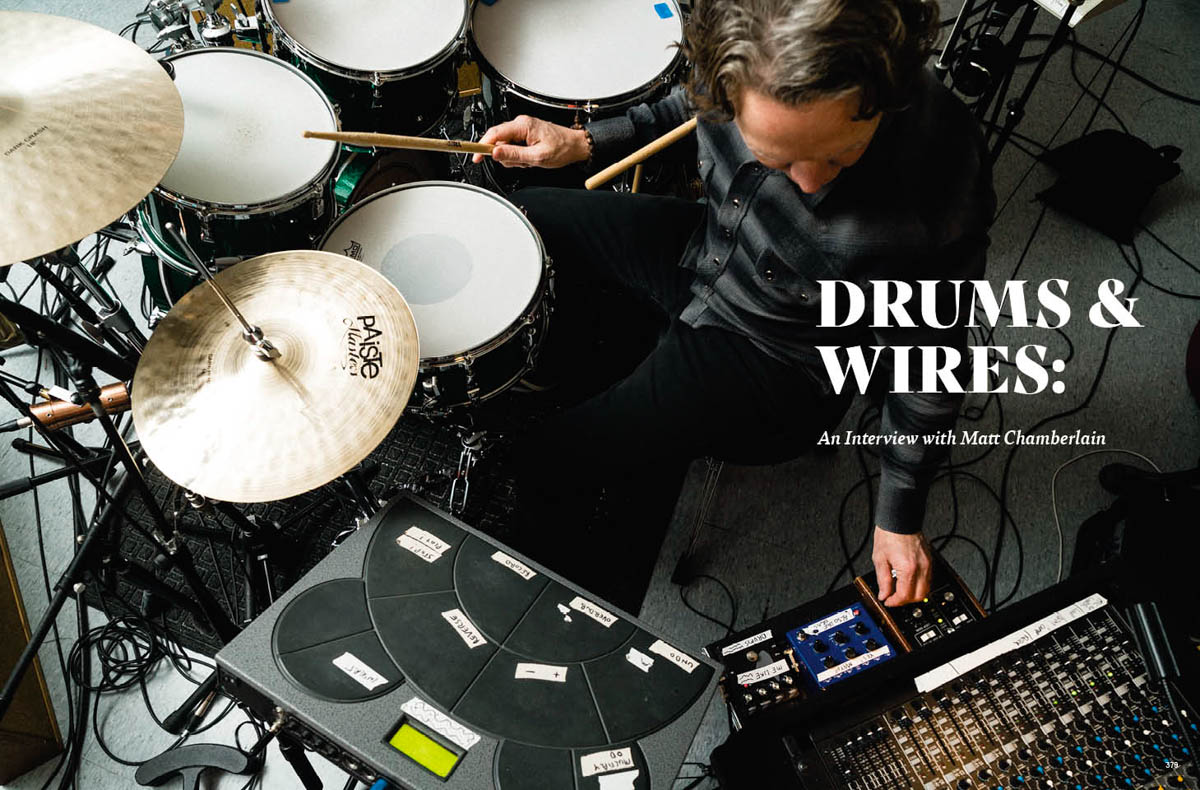
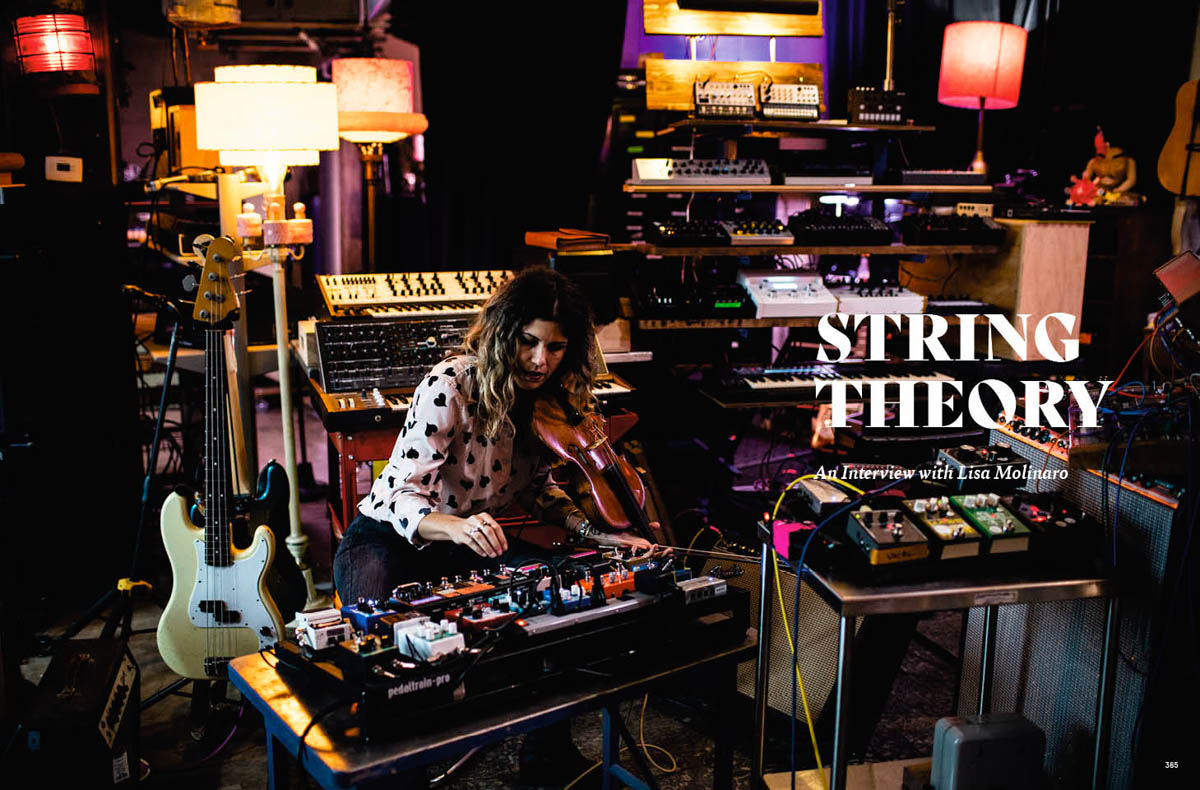
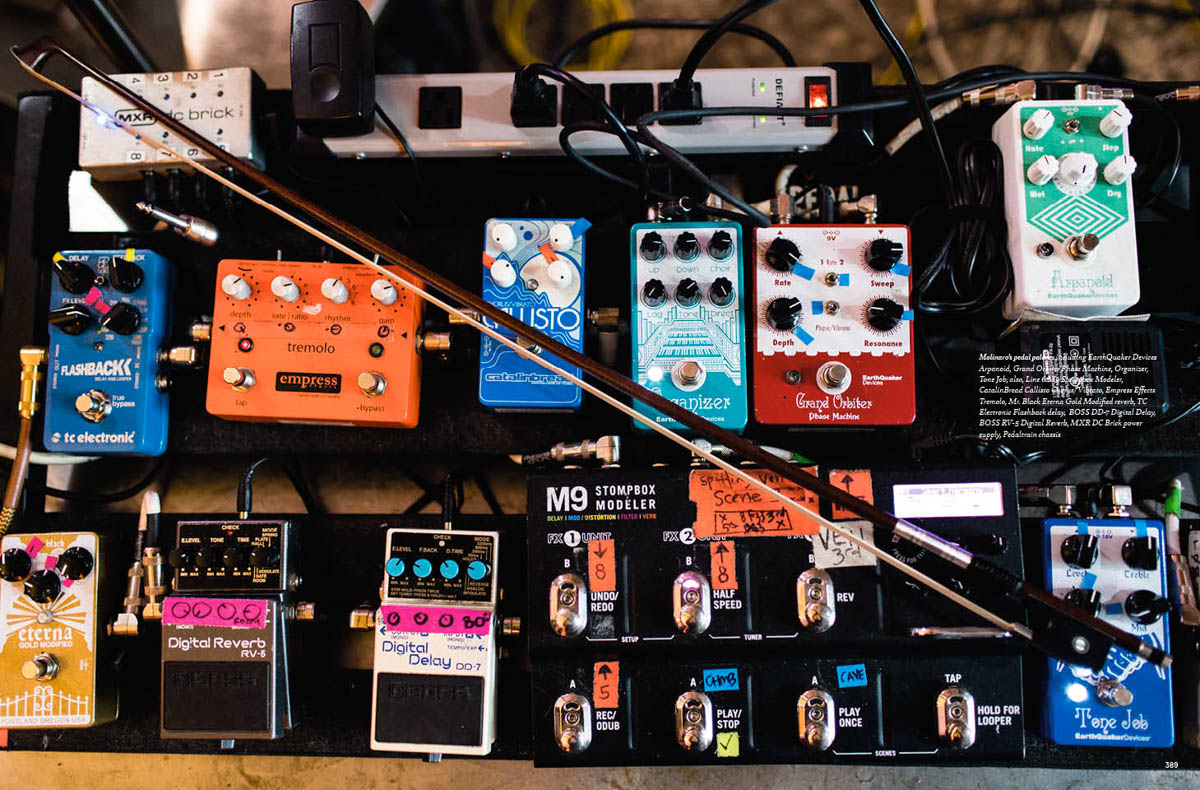
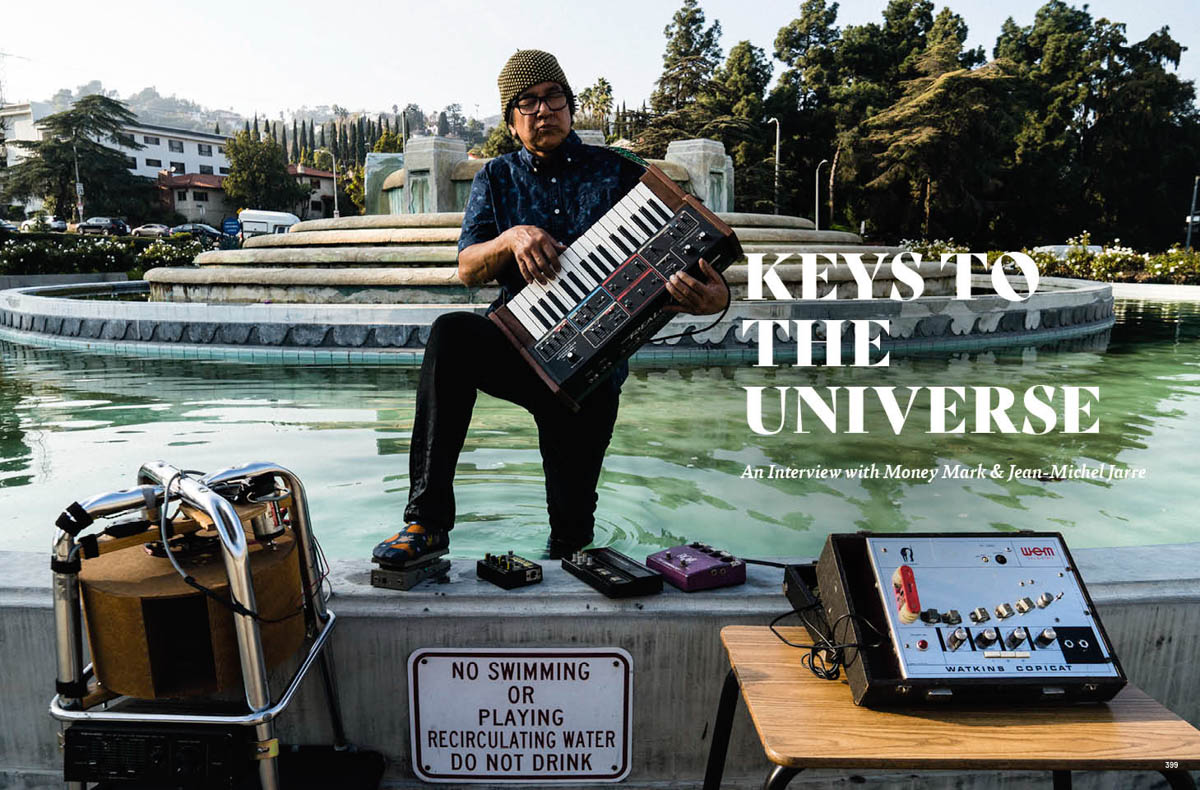
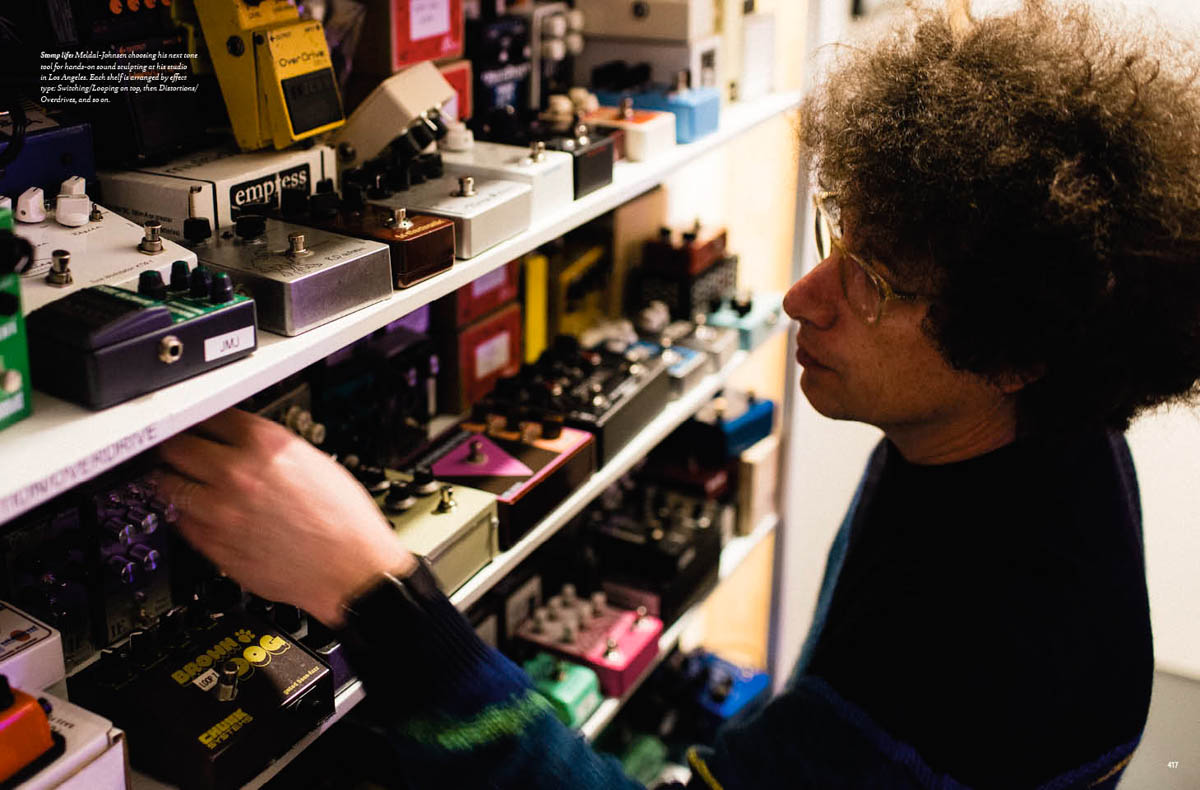
Check out the full Fuzzy Drums, Hairy Horns & Silky Keys feature in the Stompbox Book. Available Now!
Get on our newsletter for book updates.

